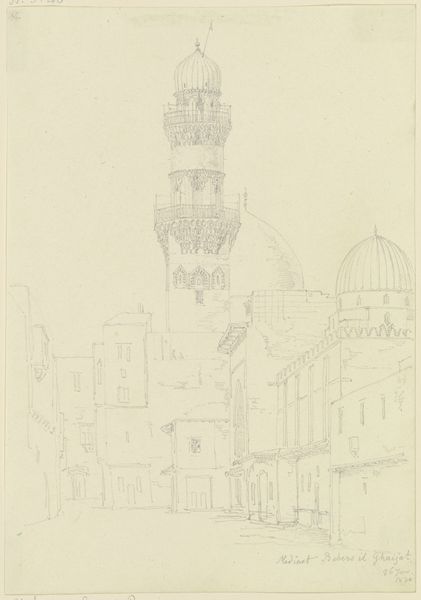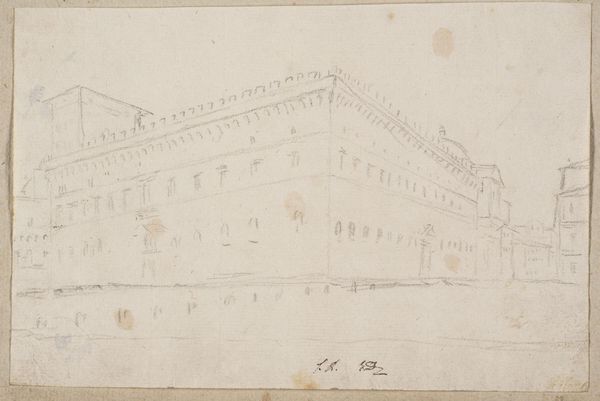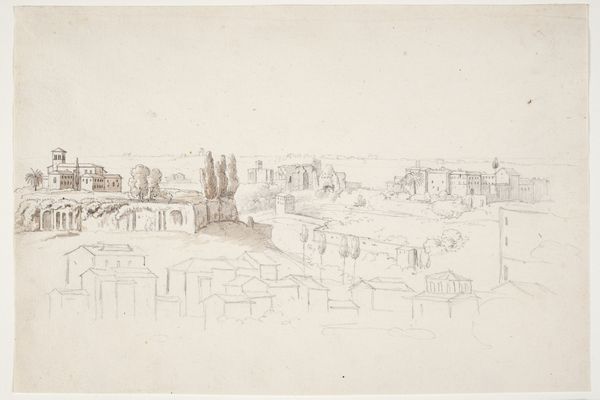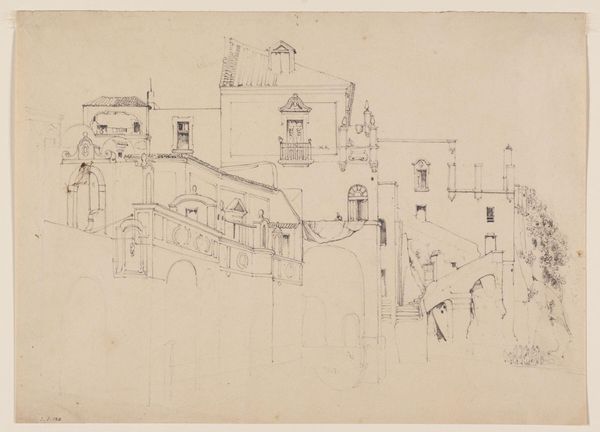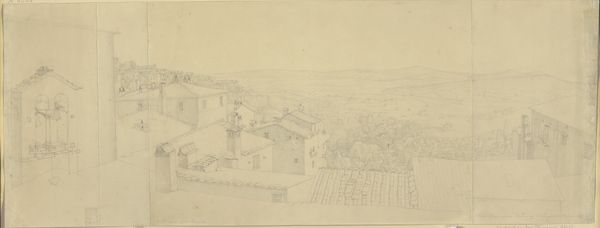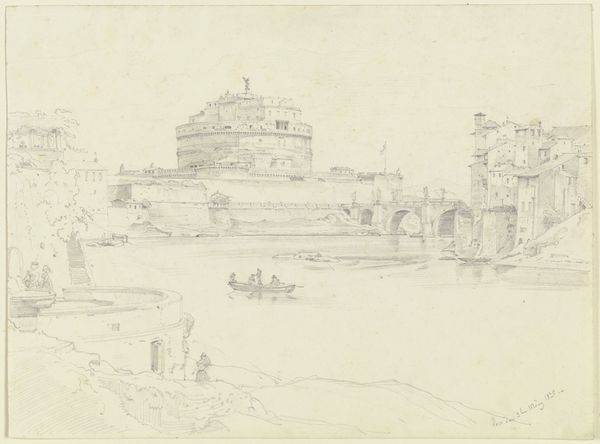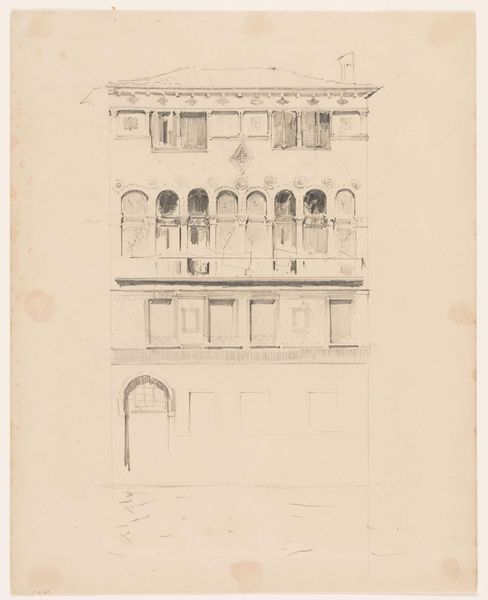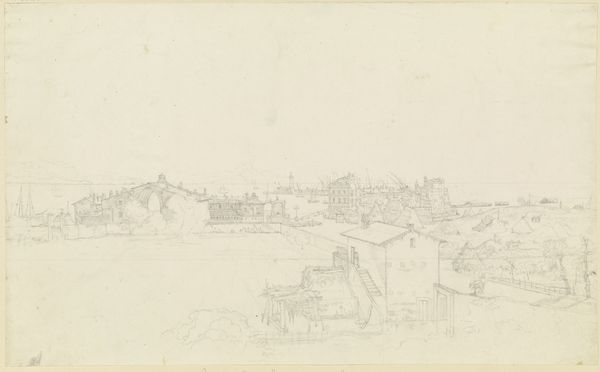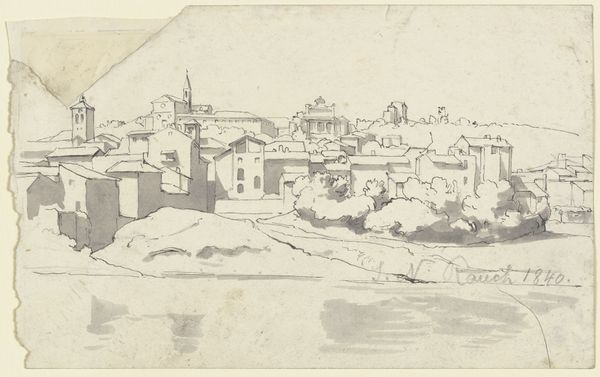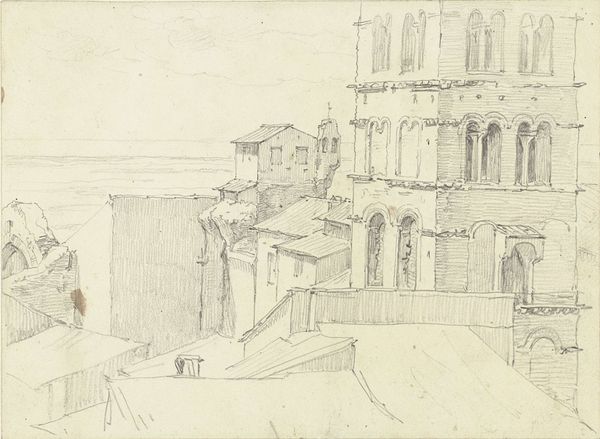
drawing, pencil, architecture
#
drawing
#
neoclacissism
#
landscape
#
pencil
#
architectural drawing
#
cityscape
#
history-painting
#
architecture
Dimensions: sheet: 11.75 × 24.13 cm (4 5/8 × 9 1/2 in.)
Copyright: National Gallery of Art: CC0 1.0
Editor: So this pencil drawing, “Capitol, Washington,” created by George Strickland in 1837, depicts a cityscape dominated by the Capitol building. It’s interesting how he chose to frame this symbol of American democracy from what looks like a rooftop view, complete with chimneys and brickwork in the foreground. What do you see in this piece, particularly given its historical context? Curator: What strikes me immediately is the tension between aspiration and reality. The Capitol, representing ideals of governance and permanence, rises in the distance, rendered delicately. But it's viewed through the lens of the everyday – the rooftops, chimneys, the very fabric of the city, still under construction. What stories do these juxtaposed images tell, when considering the hopes of a young nation, as reflected in its architecture? What emotional weight do those bare bricks possess? Editor: That’s fascinating, the way those foreground details seem to contextualize, maybe even subtly temper, the Capitol’s grandeur. How does this perspective affect our understanding of the symbolic importance of the Capitol? Curator: Well, Strickland seems less interested in celebrating power and more focused on witnessing its becoming. Consider the symbolism inherent in architectural drawings. They serve not only practical purposes but hold encoded cultural narratives, reflecting societal values and visions. Neoclassicism, a dominant architectural and artistic trend at this time, signaled aspirations of the New World to echo, perhaps even outshine, the accomplishments of past empires. Do you notice the contrast between the clear geometry of the building and the less defined surroundings? Editor: I see what you mean! The crisp lines of the Capitol versus the somewhat rougher, more chaotic rendering of the surrounding city does create that contrast. I guess it highlights the aspiration you mentioned earlier, the desire to build something lasting amidst the messy reality of nation-building. Curator: Precisely. And it compels us to ask: whose narratives are centered, and whose are relegated to the "background?" By placing the capitol within the tableau of an ordinary city street, we may wonder if Strickland wants us to recognize a disconnect between government and everyday life. Editor: It’s incredible how much can be read into what at first glance seemed like a simple landscape drawing. I'll definitely look at similar pieces with a new awareness now! Curator: Indeed, understanding art's symbolic language unlocks rich stories we have left untold.
Comments
No comments
Be the first to comment and join the conversation on the ultimate creative platform.
